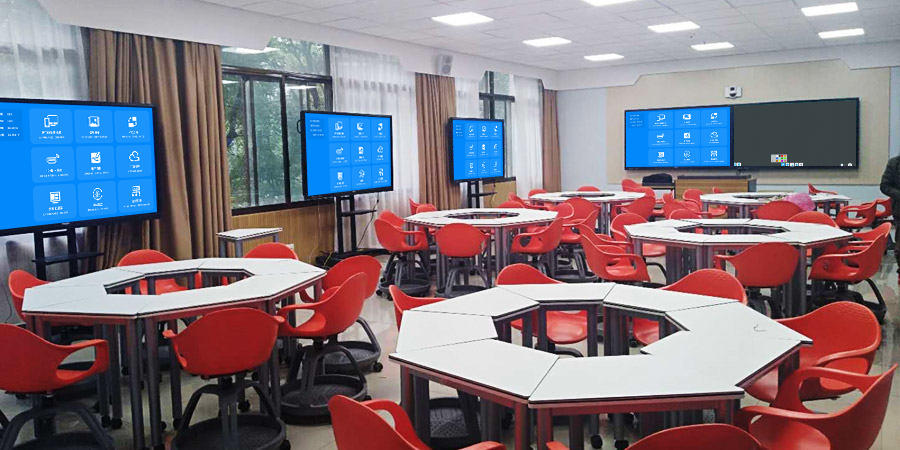Smart Classrooms: A New Era of Education for a Smarter Way to Teach
In the field of education, rapid technological advancements are reshaping teaching models, and the smart classroom is a prime example. As an innovative form of the digital and future classroom, a smart classroom leverages modern tools to completely overhaul the teaching process, making lessons simple, efficient, and intelligent. This provides strong support for cultivating students’ critical thinking and learning abilities.
Resource Sharing: Breaking Down Information Barriers
In a smart classroom, teachers and students can conveniently share learning resources from computers and mobile devices using wireless screen mirroring technology. Miracast and AirPlay make it easy to display and exchange content. Teachers can quickly present lesson materials on the main screen, and students can instantly share their own work, which significantly boosts instructional interactivity and resource efficiency.
Diverse Teaching Models: Unleashing Learning Potential
- Flexible Group Learning: Smart classroom furniture can be rearranged to easily switch between group lectures and collaborative tasks. This flexible setup expands the forms of interaction between teachers and students, allowing them to spark new ideas through teamwork.
- Innovative Flipped Classrooms: By enabling role-swapping, the smart classroom facilitates an innovative flipped classroom model. With smart devices and software, teaching resources can be managed intelligently, and interactions become more diverse, effectively improving teaching quality and efficiency. Additionally, data from hands-on activities is used to enhance the comprehensive evaluation system for students.

Smart Device Integration: Creating a Comfortable and Convenient Classroom
- Intelligent Environmental Control: A smart classroom can instantly adjust devices like air conditioners, lights, and multimedia systems to create a bright, comfortable, and convenient learning environment. Teachers can easily control projectors, audio systems, blinds, and lighting through a central control panel or a mobile app, providing a major convenience to the teaching process.
- High-Definition Cloud Recording: Multiple 4K high-definition cameras automatically track the teacher and record the lecture to the cloud. Students can access these videos at any time to review the lesson, helping them consolidate knowledge and fill in any gaps.
Data-Driven Instruction: Enabling Precise Tutoring
- Recording and Analyzing the Teaching Process: In a smart classroom, a teacher uses an interactive whiteboard to present lessons, and students use response devices to answer questions. The system records every student’s actions and generates a detailed diagnostic report on their learning outcomes.
- Personalized Teaching Models: By collecting and analyzing data from the teaching process and results, smart devices and software provide teachers with comprehensive feedback to help them improve. Based on student behavior data, the system can identify weak points in their knowledge and intelligently recommend personalized courses, offering precise tutoring and learning suggestions. This truly allows for teaching tailored to individual needs.
The emergence of the smart classroom represents a significant revolution in education. It uses advanced technology to enhance teaching quality and the learning experience from multiple angles, laying a solid foundation for cultivating innovative talent ready for the future. It is leading education into a new, smarter era.